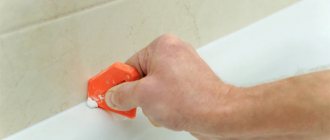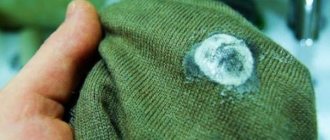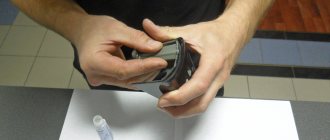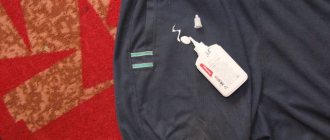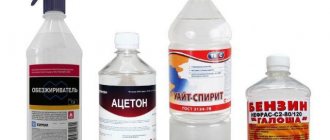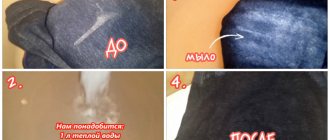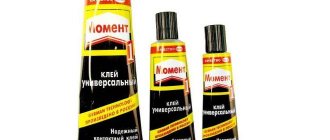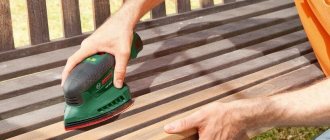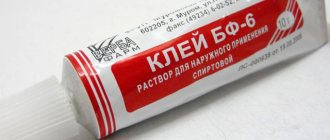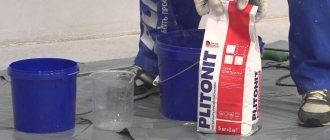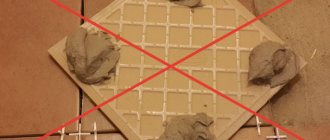How to remove super glue from clothes
Very often we are a little careless or make a careless movement when working with glue, and it leaks onto our clothes. It is very difficult to remove traces of it. Information on how to clean super glue when it gets on clothes can be quickly found on the Internet, where there are photographs of cleaning products.
The main thing to do in this situation is to prevent the glue from penetrating into the structure of the fabric or the stain from drying out. This is especially important if the glue gets on silk or nylon, where prolonged exposure to the surface can cause a burn to the fabric. Seconds matter, so you should quickly take action to save your clothes. To do this, you need to know well how to remove super glue from clothes.
Why does glue stick so quickly?
The use of simple fastening compounds saved many useful items from disposal. But how can you wipe off super glue after carelessly squeezing it out of the tube or getting it “in the wrong place”? This is a question that many have asked themselves.
Any glue is a two-component structure that works when interacting with the missing reagent. Usually this:
- liquid (water or solvent);
- gaseous substance (air or oxygen).
During crystallization, heat is released, which confirms the immediate reaction. This sticky mass quickly crystallizes, penetrating into micropores and cracks in the surface. An irreversible process is taking place, which is why it is so difficult to get rid of an accidental stain that can ruin everything.
The active substance is enclosed in a capsule with a narrow spout - the familiar packaging of super glue. Its contents are a fast-drying cyanoacrylate that is activated upon contact with air when it is squeezed onto the surfaces to be bonded.
Cyanoacrylate is also included in other adhesive compositions:
- "Moment";
- "Second";
- "Super Moment"
Superglue was invented in the USA back in the mid-twentieth century, when numerous experiments were carried out in the military industry. It became most widespread after the Chinese began to mass produce it and sell it with untranslatable instructions to many countries.
Unfortunately, no one has yet suggested a special cleaner or a suitable home remedy to quickly neutralize it.
First steps with a fresh stain
- First, carefully remove soiled clothing. It is important in this situation to force the glue to stay in one drop, preventing it from spreading over the surface.
- Next, you should quickly navigate the situation and find cardboard, thick paper, a board or plate and put it on the table.
- Clothes are placed on top of such a substrate, carefully straightened in a horizontal position.
You might be interested in reading the article Cleaning Adhesive from Plastic. Read here...
Further work depends on the type of fabric, because some types of products can have an aggressive effect on its structure. It’s good if the clothes still have labels indicating how to care for them. If they are not there, then you will have to check the effect of each means at hand for aggressiveness.
- First, take a napkin and carefully clean the glue. The less of it remains, the easier further actions will be. The glue takes a long time to absorb into dense fabric, so you can use the blunt side of a knife, tweezers or a blade to remove it.
- Next, wash the area where the stain was under running water, and if necessary, use a stain remover to completely remove any remaining glue.
The decision on how to remove glue from clothes should be immediate.
What to do if the glue has dried
Removing dried superglue stains is not easy, but you have to try. First, you can use a mechanical method - scrape off the dried glue with a knife, try to cut it with a blade. It will not be possible to completely get rid of the stain using these methods; its remnants will still be noticeable. They can be removed from clothes by washing them manually or in a washing machine. Large drops of superglue can be broken with a hammer by placing the item on a solid base. Next, the crumbs must be separated, and the stained area must be immediately washed with soap and powder.
How to remove glue stains using improvised means
The good thing about improvised means is that they are nearby. Their use sometimes does not give 100% effect, but they are safe for humans and do not have an aggressive effect on the fabric.
How to remove glue with an iron
For dense fabrics, the property of hot air can be used.
- To do this, cover the stain on both sides with napkins made of a single-color rag and heat it with an iron as hot as possible. It is important to do everything quickly, without allowing the napkins to stick to clothing and dry out.
- The heated glue can be scraped off with any sharp object.
If the cleaning procedure is not immediately successful, repeat it several times using new wipes.
It is important to remember that this method is not applicable to fleecy fabrics and knitted items;
How to remove super glue from clothes by cold
- If the fabric is delicate, then the best way would be to place the clothing in a bag so that the stain is on top, without touching other surfaces, and put it in the freezer for 1 hour. Under the influence of low temperature, the glue will become hard and brittle and will be easier to remove.
- Using a hard object, you can split it and remove it with tweezers or a nail file.
- Next, the remaining glue is washed off with water.
How to wash with soap and water
Before you wipe the super glue off your clothes, you can wash them. It is important to start this process immediately!
- First, the product is soaked in hot water. For this purpose, use a strong concentrate of laundry soap. To better remove the stain, soap the stained area.
- The clothes are left to soak for half an hour. Under the influence of an alkaline solution and high temperature, the glue begins to melt.
- Then you can erase it with a sharp tool.
The first wash may not give a result, then the action should be repeated until the stain disappears completely. When choosing the best way to remove glue from stained clothes, you can choose laundry soap.
Important! This method should not be applied to fabrics that are not recommended to be washed in hot water.
Lemon acid
If the stain on the clothing is fresh, you can try to remove it with citric acid, which you always have in the house. The procedure is performed as follows:
- pour a glass of water into a container and mix with 1 tablespoon of acid;
- the contaminated area is carefully moistened with the resulting solution;
- clothes are left for up to 50 minutes;
- The softened glue is removed with a sharp object.
Next, the clothes are washed using conventional means.
Suitable solvents
Since superglue polymerizes when exposed to moisture, standard solvents such as water, dichloroethane or alcohol will only make the situation worse. Therefore, to dissolve the “Moment” you need to use special means.
Compounds based on dimethyl sulfoxide have proven themselves to be the best in everyday life.
, in particular, "Dimexide", sold without a prescription in most pharmacies. As a solvent, it acts mainly on cyanoacrylates, which means it will not harm most materials used in everyday life.
Superglues, including Moment, dissolve very well with the help of acetone and its derivatives (for example, acetonitrile). However, acetone is toxic and has an extremely aggressive effect on plastics, fabrics, paper and wood. In addition to pure acetone, you can also use acetone-containing mixtures, for example, regular nail polish remover.
Currently, special adhesive removers based on propylene carbonate have been created
(the so-called anti-glue), for example, the Secunda brand. There are also special Moment anti-adhesives, as well as nitromethane-based solvents.
On the skin
In cases where the glue gets on the skin of the hands, it hardens quickly, since the surface of the skin is usually more moist than the surrounding environment. The most gentle way for the skin of your hands to remove the resulting polymer is to use ordinary table salt, which should be rubbed between your hands, after wetting them. Do not use soda under any circumstances, since a highly alkaline environment, on the contrary, promotes greater polymerization of cyanocrylates.
"Dimexide" is relatively safe, but requires long-term exposure, so it is not recommended to use it on the body. If salt does not help, you will have to use acetone-based solvents. The main thing is to wash your hands thoroughly after removing the glue, and subsequent application of a cream or lotion to the skin will be a good idea.
On clothes
Acetone and its compounds are absolutely not suitable for removing superglue stains from fabric. Clothes made from ordinary fabrics can be soaked for half an hour in Dimexide dissolved in water - most glue stains will then disappear. Anti-glue, especially nitromethane, is more suitable for delicate fabrics.
Another way to remove glue stains from fabric is to freeze it in the freezer for a few minutes and then brush it off. But it’s better not to clean synthetics this way.
Gasoline can be used to clean rough fabrics. You can try to remove old stains with regular vinegar, since an acidic environment promotes the monomerization of cyanoacrylates.
On plastic
Most solvents that act on adhesives that are polymer in nature also dissolve plastics that are polymer in nature. Therefore, the best way to remove Moment stains from plastic surfaces is to use Dimexide.
On glass
To remove glue stains from glass, you can dilute an all-purpose glass cleaner and apply it to the stain. You can also try using white spirit. The use of Dimexide can leave difficult-to-remove stains on the glass.
On the tree
If the wood has not yet been treated, then the easiest way is to remove the glue from it mechanically. If the surface is already prepared for use, then acetone or Dimexide are best suited for cleaning it.
On metal
To dissolve a glue stain on metal, you will have to moisten a regular cotton pad with Dimexide or acetone and attach it to the stain. After half an hour or an hour, the remaining glue is removed mechanically.
To learn how to remove glue from any surface, watch the following video.
An indispensable assistant that helps out in many situations, firmly gluing almost any materials, superglue often causes unexpected difficulties. If it gets on the skin or mucous membranes, it causes health problems, and if it remains on clothing or objects, the item becomes unusable.
To remove “Super Glue” and “Moment” glue, special cleaners with various compositions are available on sale. Available home remedies are also suitable and are also quite effective.
It is only important to consider what surfaces they can be used for.
How to remove super glue from clothes using chemicals
There are a number of chemicals that help stubborn stains come off quickly. When solving the problem of how to wipe leaked glue from clothes, you can resort to their help. The use of products containing chemical elements helps to cope with the task effectively. Usually, chemicals are used when the available means are unable to clean the fabric or the glue has already dried.
Table vinegar
Vinegar is a universal chemical and is well suited for working with any type of fabric. To clean with vinegar, proceed as follows:
- pour a glass of hot water into the container;
- add 2 tablespoons of 9% vinegar;
- small clothes are soaked in this mixture for 1 hour;
- bulky clothing is laid out so that the liquid does not spread. Apply the vinegar mixture to the stain with a sponge or brush. To ensure complete cleaning, you can leave the cloth wet for half an hour, then remove any remaining glue.
- The cleaned product is washed in the usual way.
Cleaning with acetone
You can consider yourself lucky if you have acetone in the house, which can easily help you deal with the stain. The only thing you should not forget about is to check in an inconspicuous place how the acetone will interact with the fabric.
- If no contraindications are identified, then apply an amount of acetone to the stain that can dissolve the stain. To do this, you can use cotton pads or ear swabs to try to remove the glue drop.
- If this does not work, then acetone is poured onto the fabric and left for an hour to an hour and a half for the components of the acetone to interact with the glue.
- During this time, prepare soft napkins that can be used to remove glue from the fabric. Sometimes the glue is not removed immediately, then reapplying acetone can help.
Attention! Acetone should only be used on natural fabrics.
Petrol
Good for cleaning fresh stains. However, we must remember that this is an aggressive agent towards colored fabric, causing it to discolor. It can be used for clothes made of linen, silk, and cotton. It is necessary to take into account the fact that the fuel must be of high quality, otherwise a stain may remain on the clothes.
- A napkin, sponge or clean rag is soaked in gasoline and quickly rubbed over the contaminated area.
- If the glue does not give in, you can cover the stain on both sides with a sponge soaked in gasoline and leave for half an hour.
- Next, you should repeat the cleaning and wash the cleaned product.
Important! After working with gasoline, be sure to wash your hands with soap.
Anticlean
This is a product that can instantly separate adhesive surfaces and remove any remaining adhesive. The great thing is that it can be used on both horizontal and vertical surfaces. It has the ability to discolor fabric, so you should work with it carefully:
- Place absorbent wipes on both sides of the fabric;
- Apply with a cotton swab to the stain, being careful not to protrude beyond the edges;
- leave to react for 2 hours;
- remove napkins that have absorbed glue;
- Wipe the treated surface with a paper towel;
- rinse the back of the fabric.
Solvent "White spirit"
Its peculiarity is the ability to evaporate quickly, so soaking fabric in it will not work.
- To remove a stain, moisten the stain, wait a little and apply the product again.
- This should be repeated until the glue becomes brittle.
- Its remains are removed with a sharp object.
Important! This product can only be used to remove stains from synthetic fabrics.
Dimexide
A concentrate of this product can be purchased at a pharmacy. It has indications for internal use for medical purposes. But it turns out that you can use it to remove glue stains. If, when thinking about how to quickly remove superglue from clothes, dimexide is nearby, it can be used regardless of the type of soiled fabric.
- To remove drops of glue, take 2 cotton pads, soak them in the product and apply stains on both sides.
- After 2–3 minutes of interaction, they begin to remove the glue, which, under the influence of the drug, begins to peel off from the tissue.
- If necessary, repeat the action. The cleaned fabric is wiped with a dry cloth and sent for washing.
White
Every housewife knows the product “Whiteness”. It helps restore whiteness and freshness to kitchen and bedding items. Even without thinking about how to remove super glue from clothes, you can safely use this product.
The only condition for use is that the clothes must be natural. The interaction of “Whiteness” with artificial fabrics can cause them to burn.
- If the product does not show a negative effect on the fabric during testing, then it is poured onto the stain, allowing the chlorine to corrode the glue.
- The softened parts of the glue are wiped off with a cotton swab or napkin.
- Next, the cleaned clothes are washed normally.
Super Moment Anticley
This product was specially created to remove glue stains. It has a gel-like composition, which allows you to work with it carefully. You must work with it strictly according to the instructions written on the packaging. If applied in excess, it may discolor the fabric.
It is important to test the effect of the drug before starting work!
The work is carried out in the following sequence:
- Apply the product in a thick drop onto the remaining glue or stain so as to completely cover it.
- Place napkins or a piece of rag on both sides of the anti-glue.
- Leave clothes in this condition for up to 12 hours.
- Remove napkins that have absorbed glue.
- Wipe the stained area with a dry cloth.
- Rinse the back of the fabric with water at the site of the former stain.
- If the removal is unsuccessful, the attempt is repeated.
Ammonia
Before using an alcohol tincture of ammonia to remove super glue from clothes, you should soften the hardening droplets of glue.
- To do this, moisten a cotton swab with the product and apply it to the adhesive stain.
- After half an hour, remove the remaining glue with a napkin and wash the product.
Useful tips
- The tube is not pointed towards yourself so that the substance does not accidentally get on the skin and face.
- The composition contains toxic substances, so work is carried out in well-ventilated areas.
- If not all the glue has been used, you should not roll up the tube: there is a chance that it will crack at the bend and the substance will spill out.
- You should always keep the tube of glue so you can read its composition. This will make it clear what is the best way to remove it from which surfaces.
- If super glue gets into places that are difficult to reach, for example, in a lock, then vinegar essence will help. Using a syringe, you need to pour it inside the lock, wait a little and clean it with a needle or toothpick. Anti-glue or another solvent will also help to deal with such contaminants.
During the cleansing process, certain rules should be followed. This will not only effectively remove the stain, but also prevent damage to the material on which the glue has dripped. Helpful tips include:
- It is necessary to test the aggressiveness of the cleaning agent. First it needs to be applied to a small area.
- Products with active chemical composition should be used in a ventilated area. It is advisable to use gloves and a mask that protects the respiratory system.
- Initially, it is necessary to use less aggressive substances. If they do not give the desired effect, you can resort to highly effective means.
- It is prohibited to apply substances with potentially hazardous chemical compositions to surfaces in contact with food.
- Super glue Moment must be applied to the required area, in doses. Due to its adhesive properties, very little is needed.
Advice! In case of acetone poisoning, it is necessary to immediately provide access to oxygen and seek emergency medical help.
How to wash your hands from fuel oil
Modern people are surrounded by a wide variety of mechanical devices. Therefore, no one is immune from contamination by greasy lubricants. Men are especially often concerned about the issue of removing fuel oil from their skin, because they are most often associated with the maintenance of equipment. But women and children can also get dirty with fuel oil. To get rid of it, you will need special or improvised means. It can be:
- specialized cleaning products for washing heavily soiled hands
- dishwashing detergents;
- chemicals for dry hand cleaning;
- White Spirit;
- washing powder;
- butter;
- margarine;
- eucalyptus oil;
- laundry soap;
- ammonia;
- petrol;
- car shampoo;
- soda;
- coffee grounds;
- berries;
- clay.
Depending on possibilities or personal convictions, it is permissible to use both chemical and traditional methods to remove fuel oil. The choice determines the intensity of contamination and the characteristics of the victim’s body.
Chemical methods
Chemicals are most often used to remove fuel oil. The drugs are reliable and effective. Contamination is quickly removed with effective chemical reagents. There are several options for using household chemicals.
According to the first method, to remove fuel oil, use washing powder or dishwashing detergent:
A little substance is applied to the skin and the dirt is gently rubbed. Residues are washed off with warm water.
After using the drug, it is recommended to lubricate cleansed skin with a nourishing cream to protect the dermis from drying out and irritation.
Using the following method, you can use special preparations to clean heavily soiled hands. You can buy a lot of cleaning products in stores to remove complex stains. Buying such a drug is within the capabilities of anyone.
The most popular were weakly acidic cleaners. They contain a high content of abrasives. An example of such products is the paste-like suspension SOLOPOL:
- Apply the substance to dry hands.
- In the contaminated area, the suspension is thoroughly ground.
- Add a little water and grind again.
- Residues and dirt are washed off with warm water.
- Hands are dried and lubricated with a nourishing, better regenerating, cream.
To clean your car from fuel oil contaminants, service stations sell special shampoos. Simply wash your hands with it to get rid of traces of dirt. The most effective products are Doctor Wax, Karcher, Sonax.
White spirit and other solvents are aggressive substances. But you can get into the top ten. In addition to white spirit, it is permissible to use gasoline, diesel fuel, and even motor oil. All substances act directly on the structure of the dirt.
The most delicate of all such products is motor oil. It cleans almost any dirt and is used without water. The composition has a disinfecting effect, which is especially good for damaged skin.
Folk remedies
Folk remedies will help if specialized ones are not at hand. There is a time-tested solution. It is prepared from ammonia, soda, starch and turpentine:
- In a small container, mix a couple of large spoons of baking soda and starch.
- Add to them a small spoonful of turpentine and ammonia.
- The components are mixed until smooth.
- The paste mixture is applied to your hands and left to dry completely.
- Wash off the substance and dirt with warm water and laundry soap.
Oils and clay are used in the same way as in the case of foam removal. Clay or coffee grounds will help remove fuel oil.
A natural abrasive is applied to the skin, rubbed gently but thoroughly and the dirt is washed off under heated water.
In rural areas, berries, especially elderberries, will be a salvation. They rub their hands with them, as if soaping them. Green gooseberries and red currants are suitable. Clean the leaves of rhubarb and sorrel.
A transparent film of laundry soap is no less effective. Lather your hands and wait for the product to dry completely. This must be done before work. Cleaning your skin will be much easier.
Removing superglue from various surfaces
Since glue stains can appear everywhere, it is worth taking a closer look at the possibilities of removing them from certain substrates.
Methods for removing superglue from hands
To clean your hands and other parts of the body, you need to use the safest methods, especially when it comes to a child. In general, with regular washing, the glue will come off the skin on its own in just 2-3 days. For urgent removal, you can do the following:
- wash the skin well with warm water and soap;
- wipe the stain with salt gruel;
- lubricate the stain with oil, mayonnaise or greasy, poorly absorbed cream, Vaseline;
- scrape off the glue with a nail file or pumice stone.
If superglue gets on the eye area, you should immediately consult a doctor. You should first rinse your eyes with warm water.
Cleaning textiles from superglue
Superglue is removed from fabric using different methods depending on its type. Acetone, vinegar, solvents, and folk remedies are used. Dry large spots are beaten off with a masher or rolling pin. You can put the item in the freezer, then scrape it off. Many things can be washed clean with soap and washing powder. You can also make a paste of soda, salt, rub the cloth manually or with a toothbrush. It is better to take the most expensive, valuable items to the dry cleaner.
Cleaning suede products from superglue
It is quite difficult to get rid of soiled suede; there is always a risk that unsightly bald spots and defects will appear. Fresh stains can be rubbed with ammonia or nail polish remover, but first test it on an inconspicuous area. You can also heat superglue over hot steam from a kettle and clean with a brush. Upon completion of the work, you need to apply paint and impregnation to the suede.
We clean smooth surfaces: glass, tiles, marble
From such bases, superglue can be easily removed with acetone, alcohol, and after heating with hot water. As the contamination softens, it is scraped off mechanically. You need to be careful with marble and decorative glass: it can be scratched, so it is better to use plastic scrapers.
Removing superglue from wood and furniture
Remove unsightly stains from wood with lemon juice and citric acid solution. You can try cleaning the laminate with Dimexide. Unpainted wood can be easily cleaned with mineral oil; you can use a little motor oil. It is permissible to treat varnished surfaces with products without solvents or abrasives, otherwise they will be damaged. Other tips for cleaning furniture:
- plastic products are washed with Dimexide and white spirit;
- the varnish is treated with vegetable oil;
- Fibreboard is wiped with nail polish remover;
- Products made from leatherette are cleaned with Anti-Glue, if this option is indicated on it (depending on the brand).
Cleaning your phone screen or laptop monitor
Monitors and screens can be wiped with Dimexide, after which the superglue will probably be removed. You can also use nail polish remover or acetone. Afterwards, you need to carefully wipe the surface with a damp cloth, then with a dry one.
We clean metal and lock cylinders from glue
High-quality metal will not be damaged by the use of solvents, Dimexide, Anti-glue, or vinegar, even without dilution. These substances will quickly dissolve glue stains or soften it so much that it will be easy to get rid of the residue.
If glue has been poured into the lock cylinder, the actions should be as follows:
- pick the lock with a thin knife to remove as much superglue as possible;
- take a syringe, draw Anticles;
- pour into the castle;
- after 30 minutes, try again to clean out the larva;
- repeat until the key fits into the lock.
Cleaning tiles and glass
There are different ways to remove resin from tile and glass surfaces. If the stains are fresh, they are removed by wiping with a damp sponge and soapy water. The hardened substance is removed by heating and cooling.
Heating
Contaminated areas are heated with a hair dryer until the resin softens. Then it is carefully cleaned with a convenient tool and wiped with a dry cloth.
Cooling
The resin is effectively cleaned by freezing it with a refrigerant. You should spray the spray on contaminated areas. The cracked substance is then removed with a sharp instrument.
Chemical reaction
You can wipe off the resin with acetone, toluene, nail polish remover and other chemicals. To begin with, solvents are applied to the stains and then removed with any detergent. After this, the stove and glass are wiped with a dry cloth.
You can remove stains with any suitable means. You can also consult with specialists in hardware stores about the products that are most suitable for a particular case. During the cleaning process, be sure to follow safety precautions.
Share link:
